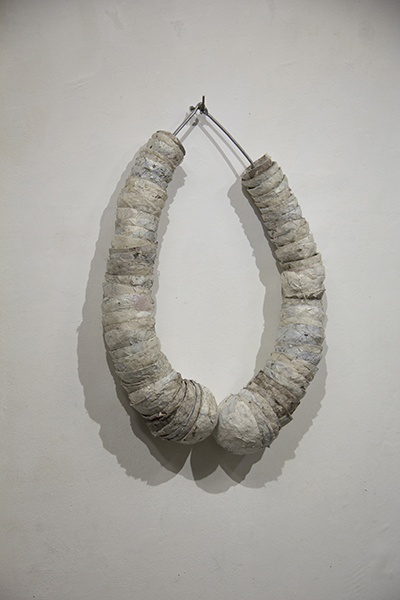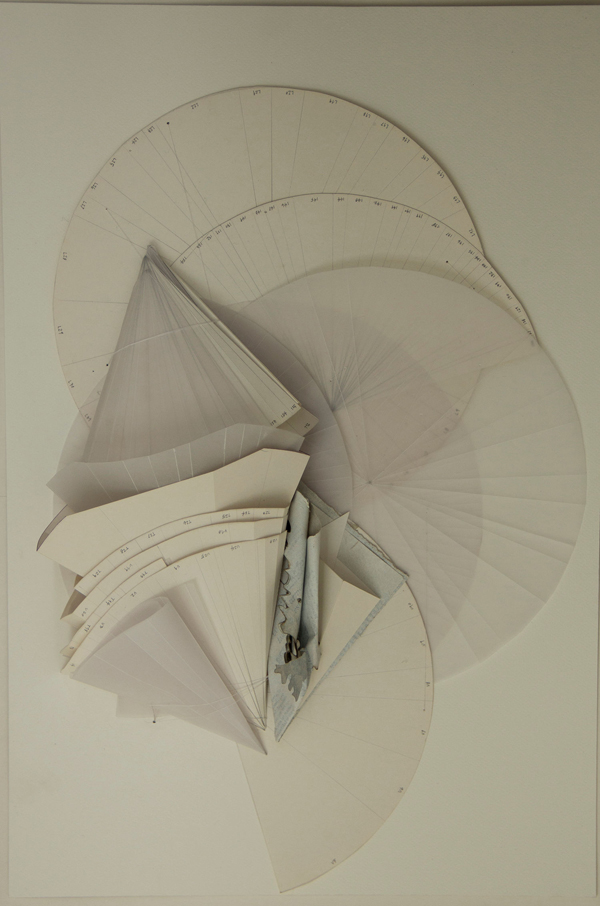










Press release
Rising figure of the Chilean art scene, Paula de Solminihac produces singular works where privacy and artistic practice are closely linked. For over ten years, her artistic investigation has its focus on ceramic and is fundamented from the perspective of contemporary archeology : the artist seeks to put attention on processes rather than objects, systematizing the study of material activity as a specific field of art.
Paula de Solminihac refers to the Triangle Culinaire pointed out by Claude Levi-Strauss to proceed with her own work: modeling the clay, cooking with fire, getting a recipient as the prime form to contain food. It also relies on the dynamic analysis of technology, term proposed by André Leroi Gourhan, which extends the analysis of technique to the movements made on the material.
Meanwhile the artist is an archeologist of her own acts. Her life and work are closely related. She keeps a diary where she carefully notes and draws her thoughts about her daily life and experience. This notesbook, a kind of mental map, itself becomes object of her investigations. It is thus a memory-oriented work - how to fix the memories - in which the artist follows some memory art principles studied by Frances Yates *. In this art she found a method to relate exterior appearances with the subjective dimension of who remembers by printed images in the mind.
For her first exhibition in France, Paula Solminihac presents a specific project emerging from a residency conducted on February 2015 at the Sierra Nevada de Santa Marta (Colombia). The result of a grant awarded with the support of Galerie Dix9, this research was first destined to make contact with the natives of the area, known as the first Latin-America potters. Some works made from this trip will be shown in the major exhibition Ceramix** organised by three European institutions.
Diaries of a metamorphosis, Hidden Names bring together works from an excavation of the artist own experience in Santa Marta and represent reminiscent vestiges of archaeological finds. The unknown or unnamed are part of it, and the title given to the exhibition was inspired by a children’s conversation overheard by the artist – about body places that do not have a name. The works allude the fragility of culture in front of nature and time’s buffering. They testify of a devastated and extinct world like survivors of a catastrophe promoted by elements like water and fire.
Archeological matters, a kind of fossil cocoons, are clay stones obtained by a natural modeling. The artist used some colorful clay remains, dry and hard traces of earlier pieces. She moistened them back, wrapped in clothes and submerged in water and sand. While recovering its initial softness, the clay adopt new forms that are like fossils cocoons. In Levi Strauss’ transformation chain this would be a regression – from dry raw to moist raw. The Cascaras, a kind of shells, are made from the pages of the artist’s diary. They may be solid, but also soft, like those envelopes in linen and cotton. Like the stones, the Cascaras symbolize the very essence of alchemy, that can be resumed by “everything that has been, is and will be”. Shown as a necklace, the Cascaras point out the recurrence of the circular shape, a sign of the production cycle and a constant renewal. The paper drawings give a form to vacuum. Bypassing the empty spaces in her daily notebooks, the artist creates a register code of the absent and lets imagine a story. Victoria is the redoing of the Victoria Amazonica, a type of lotus found in the Amazonia. In addition with its beauty, it has that peculiar structure that can hold on kids while floating. Armylaria combines a fungi scientific definition and notes from the artist diary. Both have in common the effort to define the undefined as it is a pond or a raw clay.
Based on a structuralist analysis of ceramic, with a distinction between raw and dry, Hidden Names reveal a thought related to alchemy,metamorphosis and the eternal cycle of life.
** Mainly the four classic rules that lead the Ad Herennium
**exhibition Ceramix at Bonnefanten Museum in Maastricht, NL (Oct 16 to Feb 5. 2016), at la Maison Rouge, Fondation Antoine de Galbert, Paris and Cité de la Céramique de Sèvres (Spring 2016)
The exhibition is supported by the Chilean embassy in France, Engie Chile and François Lurton company



















